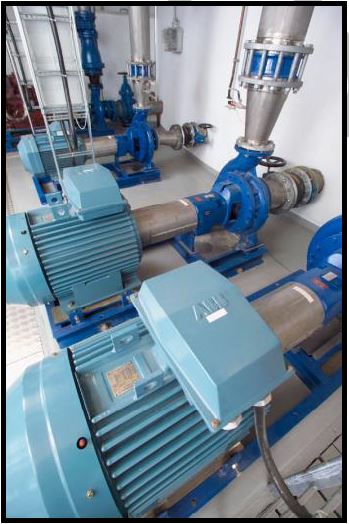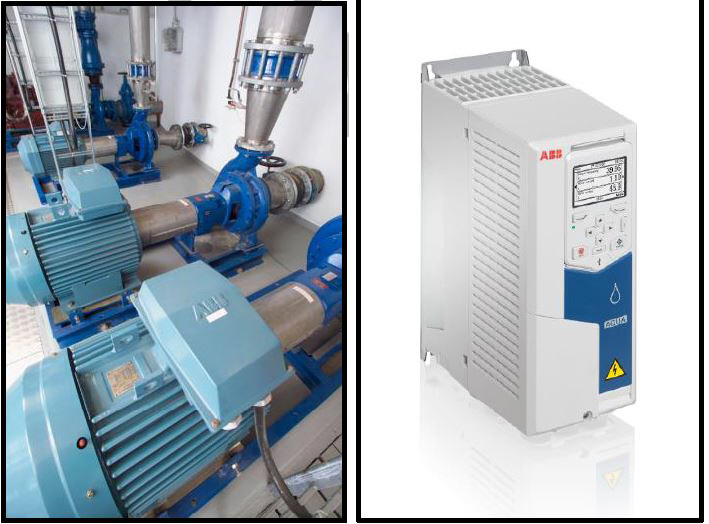Squeezing the most out of your variable speed drives
ABB’s Martin Richardson offers some tips to ensure that your installed base of variable speed drives (VSDs) operate the pumping system at its optimum reliability, efficiency and performance.
1. Check VSD parameter settings regularly
If a VSD isn’t set up properly or the needs of the system changes then this can have a significant impact on the performance of the pump process. Sometimes site engineers might adjust the set-up, making changes without fully appreciating the impact on the overall system. A little knowledge can be a dangerous thing.
To maximise the reliability of the installed VSDs from day one, leave the parameter settings to the vendor and ensure that they are checked at least annually as part of a proactive maintenance schedule.
2. Consider replacement, upgrades and retrofits
Over time almost all pumping stations need to change their capacity, either in response to an increase in the local population, or in preparation for it.
This provides a good opportunity to replace, upgrade or retrofit the installed VSDs and/or electrical motors. The VSDs, for instance, can often be refurbished and reused in the new system, at a fraction of the cost of buying new units.
In cases where the pumping station needs to increase its capacity to meet growth in population, existing VSDs may no longer be suitably sized for the new pumps. Yet rather than buy new VSDs, it might be possible to retain the existing cabinet and framework and simply upgrade or retrofit specific parts. This approach not only saves capital cost but can cut the installation and commissioning time too.
 3. Use VSD smart functions
3. Use VSD smart functions
Today’s water industry VSDs come packed with smart functions as standard and can add several percent to the efficiency of pumping equipment and cut maintenance. By putting control functions in the drive, it cuts the need for a PLC, while saving energy, reducing downtime and preventing pump jamming and pipeline blocking.
Among the intelligent pump functions is sleep boost, which runs the pumps to boost the pressure or water level just before they shut¬ down, extending the pump’s sleep time and so saving energy. It also avoids unneces¬sary starting and stopping of the pumps.
The pump cleaning function, also referred to as anti-ragging, is the smart function most commonly used by the water industry. The pump cleaning function takes action before things get critical. When a blockage is detected, the drive automatically runs the pump back and forward rapidly to clean the impeller, quickly returning flow rates to their normal level and avoiding any reduction in service. This also avoids the needs for more costly intervention, such as lifting the pump to remove the blockage.
Smart functions enable the VSD to sweat the other assets in the pump system – in other words make them work harder and/or better. For example, the pump cleaning function doesn’t benefit the drive itself, but it can extend the life of the pump, reduce maintenance intervals and increase efficiency of the pump system as a whole.
4. Make the most of PLCs
PLCs integrated into VSDs work best in simple applications such as booster sets. Yet even a simple programme can save hundreds of pounds on a single pump. Multiply that by the number of drives in a typical pumping station and the savings can be significant.
For example, the VSD can be programmed to reduce water pressure during the night when demand for supply is lower. This saves energy, and reduces the risk of leakage, as the higher the water pressure the more chance there is of a leak occurring. This cuts maintenance costs throughout the life cycle of the pump system.
5. Check the energy control philosophy
It is possible to improve the energy efficiency of a pump system by between 15 and 20 per cent simply by ensuring the control philosophy is adequate.
For example, the traditional method of filling a storage tank is to run the pump at a fixed speed using a sensor to indicate when the tank is full and then switching the pump off. However, greater energy efficiency – and reliability – can be achieved by switching the control philosophy of the VSD to pump slower for longer. Reducing the speed of the pump cuts energy consumption. It also eliminates the constant stopping and starting of the pump, which reduces wear on bearings and seals, cutting maintenance costs and contributing to the reliability of the pump system. And it makes batch processes, such as chemical dosing, easier to predict, as it is easier to deal with a steady flow of water than with rising and falling volumes.
A reliability assessment is the recommended first step to help water utilities to sweat their motor-driven assets. For more information, visit ABB (stand S5) at the Pump Centre Conference, or go to ABB’s dedicated reliability website at http://new.abb.com/uk/campaigns/water-totex/water-reliability

